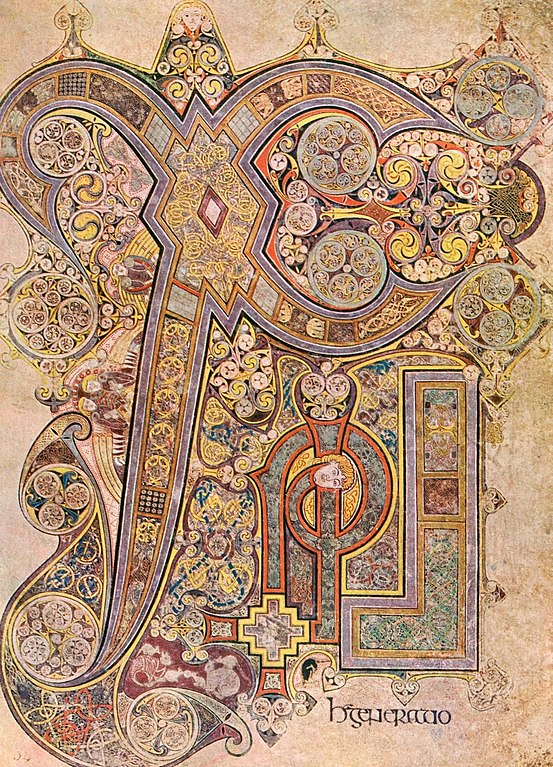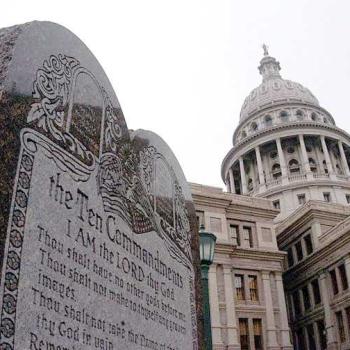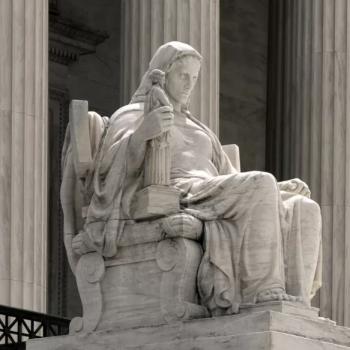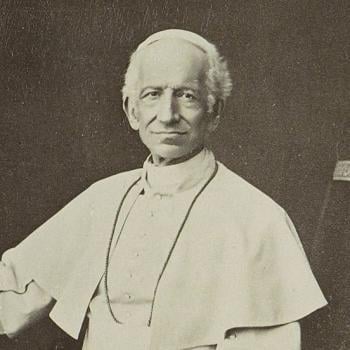The 6th to 8th centuries were a golden age for Irish monasteries. The hand copying of books first became a monastic practice in Ireland, at a time when Europe was dealing with the fall of Rome and the start of the Dark Ages. Until the 13th century every book produced in Europe was hand copied by Christian monks, and it was the Irish who refined the medieval art of book making (in the publishing sense!) and taught the rest of Europe. Irish monasteries were also centers of a renaissance in Celtic art. In this post I want to say more about the early history of Irish monasteries and why they were so special and so important.
Please note: History preserved a great deal of information about the lives of Irish monks but not as much about nuns, although we know there were nuns. One runs into the same problem with the history of Buddhist monasticism in China and elsewhere. In this post I’m going to adopt a practice that’s common among English-speaking Buddhists — using monastic and monastics as a gender-neutral term when referring to both nuns and monks, in the assumption that whatever was happening among monks could have been happening with nuns as well. Although we don’t always know.
The First Irish Monasteries
It’s believed monasticism was introduced to the Irish by Saint Patrick (ca. 385-461). Of course, at the very beginning there were no monasteries in Ireland. So at first most of those who took on the monastic life became hermits, following the practice of the Desert Fathers of Egypt. In his book How the Irish Saved Civilization, Thomas Cahill said the Irish hermits called themselves the Green Martyrs. “The Green Martyrs were those who, leaving behind the comforts and pleasures of ordinary human society, retreated to the woods, or to a mountaintop, or to a lonely island — to one of the green no-man’s-lands outside tribal jurisdictions — there to study the scriptures and commune with God,” Cahill wrote.
But soon small communities of monastics formed, usually living in small beehive-shaped huts near a church. In the 6th century the many monasteries that sprang up in Ireland were like small villages, usually contained within a wall. And while exact numbers are elusive, it’s believed that during this period the Irish population had a higher percentage of monastics than anywhere else in Europe.
Saints and Scholars
Possibly the first formal Irish monastic community was established by women in Kildare under the leadership of Saint Brigid (ca. 451-525). Another early monastic deserving of special mention was Saint Finnian of Clonard (470–549), who received monastic training in Wales and brought it back to Ireland. Finian is remembered as a gifted teacher who attracted students from the continent as well as throughout Ireland. Through the influence of Finian and other Irish monastics who valued scholarship, Irish monasteries became known as centers of learning. Monastics studied the work of great theologians and also the classics of Greece and Rome. This is reflected in the many books they left us that they hand copied. Ireland became the land of Saints and Scholars.
The Irish were the first European people who converted to Christianity without becoming Roman citizens first. So while the Catholic Church of the European continent had been shaped by Roman civilization, Irish monasticism developed in ways that were more, well, Irish. In the established monastic system of Europe, a bishop had exclusive jurisdiction within a given area or diocese. But Ireland in the 6th century wasn’t organized by diocese, and Irish monasteries formed loose networks based on whatever saint had founded them. In those days there was no Archbishop of Ireland or equivalent, and the Pope was very far away, so the Irish monastic system was less rigidly hierarchical and enjoyed unusual freedom of religious and artistic expression.
Life in medieval Irish monasteries was austere. Usually recitation of morning prayers began at dawn, and this might be followed by readings from the Gospels. Then monastics began their assigned work. Their only meal for the day would be at 3 p.m., “except during times of famine.” The work they did might include farm work, cooking, or building maintenance as well as book copying or other crafts. They continued the older craft of Celtic metalwork, creating such treasures as the Ardagh Chalice. Monastics were pastors and ministers to local laypeople and teachers of their children. Monastics also preserved much Irish history, folklore, and poetry.
And Then Came the Peril
Vikings first raided the Irish coast in 795. They soon realized that the richest places to plunder were the monasteries. Irish monasteries had defenses against ordinary thieves, but not Vikings. The raids continued into the 9th century, and the 10th. For a time Vikings occupied and controlled Dublin. Eventually the Vikings were defeated at Clontarf by High King Brian Boru in 1014, and the raids stopped. But until then, Irish monasteries remained in peril. Many monasteries were looted several times over periods of years. Many were completely destroyed. Irish monasticism continued after the Vikings were defeated, but it was not the same.
The illiterate raiders ruined books by ripping off and keeping the elaborate leather binders and tossing away the pages. The beautiful metalwork, often inlaid with gold, was of course highly prized. Coastal monasteries sent many items to places further inland, thought to be safer. This is how the famous Book of Kells came to be at Kells, roughly 50 km or 30 miles from the coast. More often monastics hastily buried books and precious metalware when they heard Vikings were coming. But if the community was massacred, as was often the case, there was no one to remember where objects were buried.
So it was that the Ardagh Chalice and several other exquisite items of metalwork were found in 1868 by two boys digging for potatoes. “In modern times, and still today, a farmer’s spade will occasionally uncover some lost treasure,” Thomas Cahill wrote in How the Irish Saved Civilization. Some hand-copied books were in the possession of families for generations, often out of sight until hard times caused the books to be put up for auction. So, much has been saved. But much was lost.













